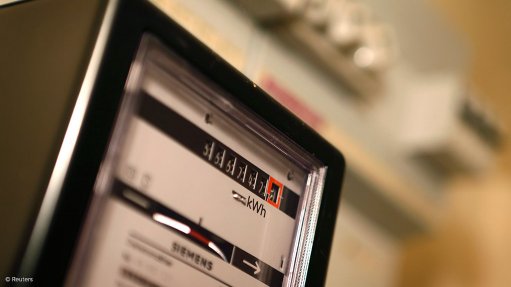
Photo by: Reuters
With the models of energy utilities worldwide increasingly “turned on their head” on the back of technological advances and an ever-transforming industry, more and more stakeholders were realizing the importance of adapting to and adopting technology into their networks.
Itron sub-Saharan Africa regional marketing director Imraan Mohamed told delegates at the Africa Utilities Telecom Summit that the energy industry was undergoing transformation, owing to an increase in renewable-energy generation, the emergence of energy storage, energy contributions from shale gas and shale oil set to increase, decarbonisation incentives, the decentralisation of energy and new entrants and competition from utilities’ own consumers, besides others.
Multidisciplinary consultancy Mott MacDonald, meanwhile, outlined a “time of transition” for energy use and delivery, with smart grids heralding “a new era” in energy provision, through improved levels of control, management, security and efficiency.
A White Paper tabled by Mott MacDonald stated that utilities were increasingly starting to grasp the opportunities of smart grid technology, which offered better, more sustainable commercial models that enabled utilities to deliver better services to customers.
The company noted that smart grids and smart metering had presented an opportunity for customers and utilities alike.
Meanwhile, Mohamed explained that, in future, utilities would require operational efficiency, customer engagement and effective demand response, as the development of smart grids and smart cities gained traction.
And smart metering was the start of this, he stated, adding that there was “a lot” of activity surrounding the application of smart meters, with “millions” of points already deployed worldwide.
An EY report revealed that global revenue from yearly smart meter shipments would rise from $4.4-billion in 2013 to $6.6-billion by 2023, with the number of worldwide smart meter shipments increasing from 94-million a year in 2014 to 116-million a year in 2023.
By 2020, it was expected that 195-million meters would be installed worldwide at a cost of $46-billion.
This trend was evident in South Africa as several cities, including the City of Tshwane, progressed the roll-out of prepaid smart electricity meters.
The City of Tshwane, through an off-balance-sheet funding model, was installing smart prepaid electricity meters and replacing old meters through its security of revenue project, aimed at reducing the debt owed to the city and securing future revenue, said Total Utilities Management Services (Tums) COO Paul Renshall.
The administrative capital of South Africa, which currently supplied electricity to about 500 000 customers, had tasked Tums with the deployment over the next few years of about 430 000 prepaid electricity smart meters.
The project would enable Tshwane to control late and nonpayments for electricity, the high rate of electricity theft and nontechnical losses and overcome inaccurate billing and loss of revenue.
EY sub-Saharan Africa performance improvement competency leader Hennie Human said this showed the city’s seriousness in getting arrears under control, particularly as it recently cut the supply of electricity to about 8 000 customers owing to outstanding payments.
The smart meter programme also modernised Tshwane’s outdated electricity metering infrastructure and allowed for early fault detection, while improving users’ awareness and self-management of energy consumption.
The city’s smart meters allowed automated meter reading, data management, data processing and analysis.